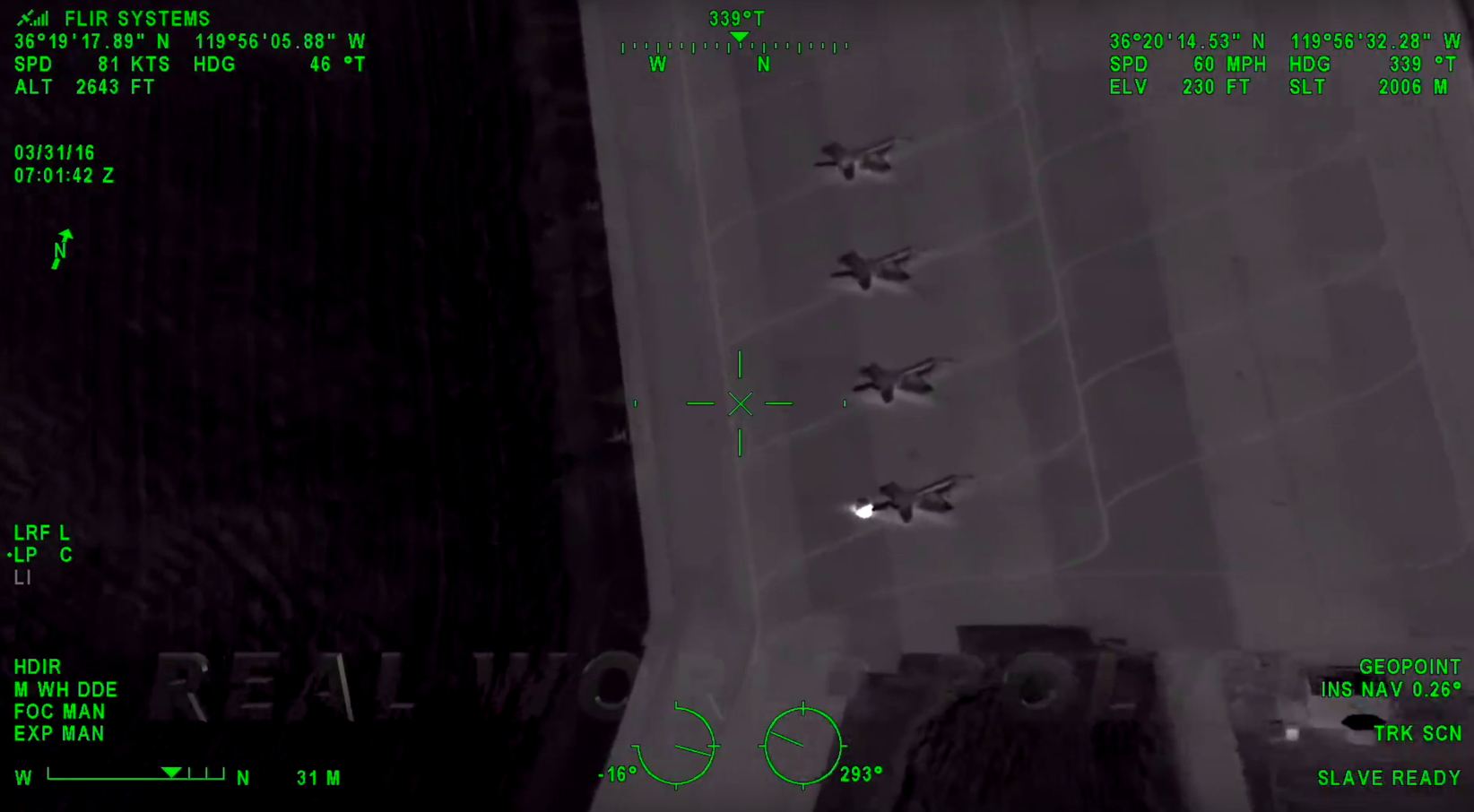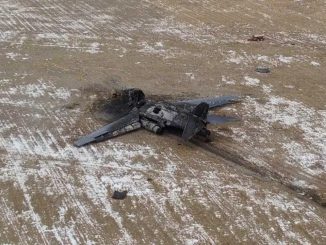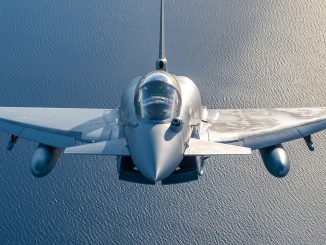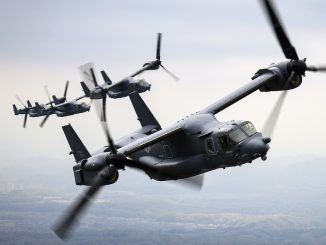
Recently-released footage shows an unauthorized vehicle being pursued by California Highway Patrol inside Naval Air Station Lemoore, California, in 2016.
On the night of Mar. 30 – 31, 2016, a Jeep Grand Cherokee was able to intrude into NAS Lemoore where the vehicle, chased by California Highway Patrol vehicles crashed into the tail end of a parked F/A-18 Hornet jet.
The female passenger died at the scene, while the driver died at the Community Regional Medical Center in Fresno.
A CHP helicopter (“H40”, an Airbus AS350B3 – H125 – registration N975HP) chased the Jeep and filmed the whole scene using its FLIR camera. The footage is particularly interesting as it includes audio and flight data parameters, including the chopper altitude and speed, and also shows (at 05:52) a Hornet performing a touch and go.
You can hear from the radio comms that the helicopter aircrew are concerned of deconfliction with the Hornet in the traffic pattern. Then the Jeep enters the ramp where all the F/A-18s are parked, reaches the threshold of RWY32R before entering the taxiway that leads to the apron to the east of the runway. At 10:06 it hits the stabilizer of one of the Hornets parked there and comes to a stop in a field between the runway and the taxiway.
The H125 lands to take custody of the driver and coordinate ground units to the location.
The episode raised many questions, the most obvious of those is: how could a vehicle pass an armed U.S. Navy security checkpoint and then wander for several minutes inside an active airbase with flying activity in progress?
“What went wrong? Regardless of the security procedures, something went wrong,” said Cmdr. Monty Ashliman, the commanding officer of NAS Lemoore according to an article posted the day after the accident. “We have to figure out a way to prevent that from happening in the future. […] “There will be an intense effort to ensure that we not only take care of our assets and be good stewards of the tax payers dollars but that it’s absolutely safe before it goes flying again” he said.
Security protocols and procedures were updated after the review that followed the accident.
According to the report issued after the accident, hydraulic concrete barriers that raise up from the ground to stop such incursions were deployed only after the Jeep had already passed through. Moreover, the investigation highlighted that CHP officials were unable to notify NAS Lemoore personnel about the pursuit because they were calling an active number that had been provided to them for the base but it “was associated with an NASL building that had been demolished approximately 10 years prior.” Attempts to call on a back up number failed as well. The most concerning part of the report is that sailors at the “checkpoint didn’t know about the SUV until a CHP officer tracking the SUV drove up to the checkpoint booth and informed them.”
Contact between the NASL Regional Dispatch Center and CHP dispatchers was established only “six minutes after the Jeep Grand Cherokee hit the F-18 Hornet.” Furthermore, the report highlighted that the internal mobile radio system used by personnel at NAS Lemoore was not compatible with the equipment in use with the local law enforcement.
The conclusion of the U.S. Navy report recommended that NASL should maintain an updated phone contact list with “all federal, state and local law enforcement entities” and periodically test for two-way communications to verify accuracy, The Hanford Sentinel reported.
There might have been further security changes following the accident, but these have not been made public.
The extent of the damage to the Hornet is also unknown.
H/T David Ljung for sending this over



